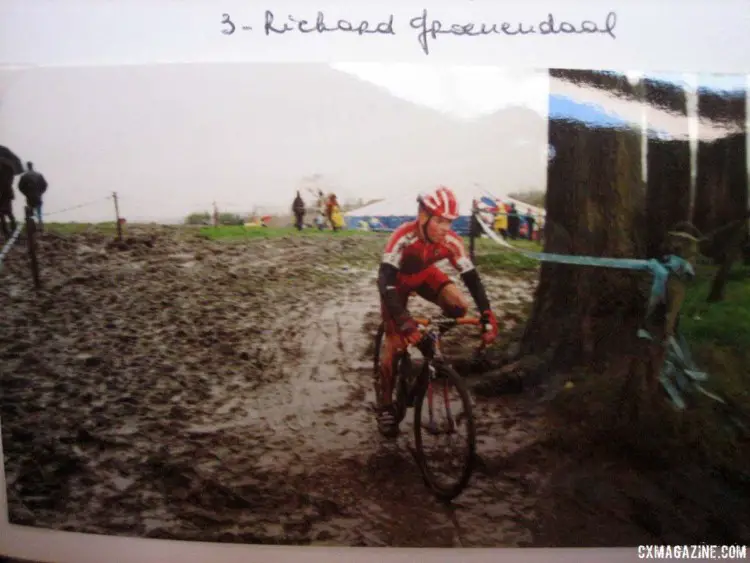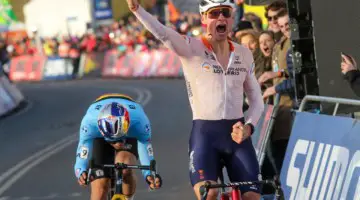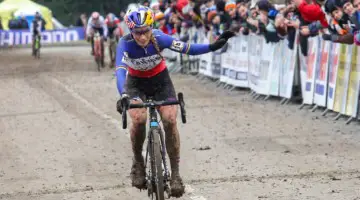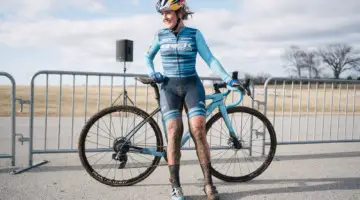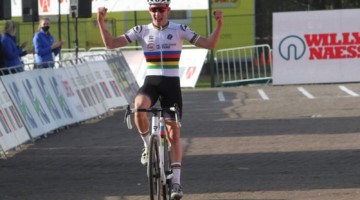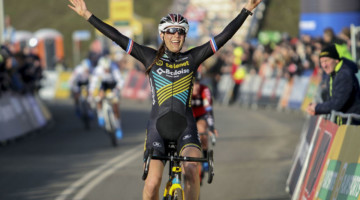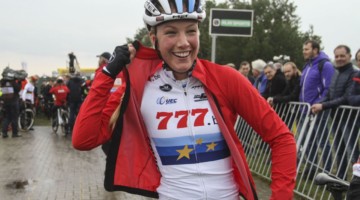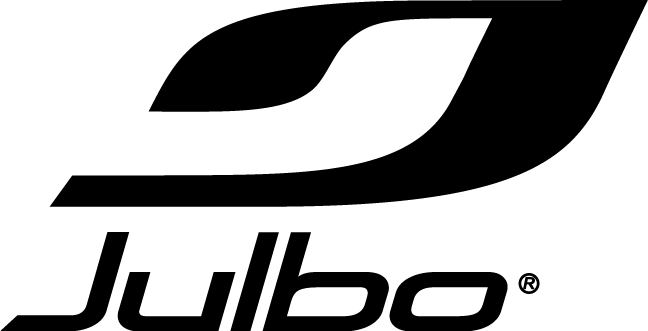
Our coverage of the 2018 Worlds is presented by Julbo Eyewear. Check out the glasses that 2018 National Champion Stephen Hyde wears.
Dit weekend verzamelen de beste renners ter wereld zich in Valkenberg …
Wait, you don’t speak Dutch? Despite wishing otherwise on a daily basis, neither do we. With the World Championship happening in Valkenberg, Netherlands and the generally larger presence of ’cross in that part of the world, there is plenty of coverage available to bilingual fans, or those willing to abuse Google Translate.
For this special Cyclocross Worlds edition of Rumors& Rumblings, we dusted off our English to Dutch phrasebook and browsed the headlines of Belgian sports websites. Just kidding. We used the online translator, but the articles are still worth reading, even if roughly translated.
Talking ’Cross with Erwin Vervecken and Richard Groenendaal
First up is a longer article from sport.be.
It takes the form of a conversation among former World Champions Erwin Vervecken and Richard Groenendaal with TV commentator José De Cauwer. It’s long and meandering as any good conversation is and covers a great deal. There are really two parts here that stand out. First is a really good comparison of Van der Poel and Van Aert to each other and the rest of the pro field. Most interesting is how they speculate on the riders’ futures in road racing.
Erwin: “They’ve been the two best for the last three years, Mathieu this year, but two years ago they were very close together. Last season there was a small difference, now the difference is very big. Of course this time had a good summer, two years ago he spent a long time, last year he returned to Gieten.”
José: “The difference has always been there.”
Erwin: “In terms of pure talent, Mathieu is the better of the two, let us be honest about that.”
Richard: “In terms of pure ’cross talent though, if you look at the construction of Wout, he will go in the direction of a classic rider.”
Erwin: “Wout has the figure of [Tom] Boonen. He weighs 76 kilos and he said recently and there will be another two kilos by the age of 30. Then you’re heavy as a ’crosser.”
Richard: “If someone else becomes world champion, who cares about that?”
They talk about the course as well. Unlike previous World Cups at Valkenberg, it is a more spread out course that requires power. Traditionally, it favors Van Aert over Van der Poel but this year the Dutch wunderkind has been stronger on flat ground as well.
Richard: “The course is even more in favor of Wout than in the previous Caubergcrosses for the World Cup. The course is more extensive, the climbs are longer, the bends are more running, while it used to be more up and down on a smaller surface. Now it is, in short, the first half of the circuit down and the second half up.”
The second part has a good analysis of how racing has changed due to advances in bikes. Over the last few decades bikes have gone from steel to aluminum and are now almost exclusively composite. At the same time brake technology advanced from cantilevers to the hydraulically actuated disc brakes which are now standard technology.
In short, you can race differently because you can stop reliably and your bike goes where you tell it to. They also talked a little about how tire construction has improved. As casing quality improved riders can run lower pressure without the tire folding on itself.
Erwin: “We had a discussion about that while we were cycling. In terms of profile you used to have two types: slick or Grifo. The Rhino only came in 2003-’04. That was, for example, a great luxury for Lars Boom or to a lesser extent Niels Albert. Before that it was really balancing, you had to have technology. From the arrival of the Rhino, it was the pure power that counted. Lars Boom had that big engine. If you sent the bike somewhere, he would also go there.”
Richard: “Turning speed really only became important when everyone evolved with his materials and training. When they could not drive each other off in the straights, it had to be done in the corners. Nowadays there are so many curves in a circuit that corner speed is really important. In terms of material, you see that top riders, due to their high cornering speed, have to opt for a mud tire in three quarters of the cases.”
Erwin: “That also has to do with the disc brakes. We used to have to start braking 20 meters before the bend or you did not make it. Now they brake five meters before the turn and they still get there, due to the combination of disc brakes and Rhinos.”
Richard: “You used to start a descent through the top, make your rims dry by braking — you noticed: the brakes do it — and then you [have] the brakes. Nowadays with disc brakes you can start the descent blindly. If you notice that things are going fast, then you just make some adjustments. That did not happen in the past. If you started to brake halfway down the slope, your brakes did not stop you from being down. That also makes a lot of difference in speed. Now it is aggressive, then it was dosed technology.
I compare it with motorsport: you had race car drivers who could ride very fast on a dry circuit with a top car, but others who were faster with a lesser car on a wet circuit. You used to have that with regular tires and without disc brakes.”
Neils Albert on Wout van Aert
Next up is a somewhat cryptic interview with Wout van Aert’s coach Neils Albert. While acknowledging the second place performance of the current World Champion for most of the season, he is hopeful for van Aert’s chances in Valkenberg.
Albert is therefore confident about the World Championship in Valkenburg. He expects a very nice fight. “We’re going to come up with something to make it even more exciting,” he said during the broadcast.
While details were scarce, Albert hinted that van Aert may unveil new rubber at the race again this year.
“Every year I have something I think about, this year is no different, if it continues to rain next week, I might have a nice tire. I hope to be able to unpack it next week.”
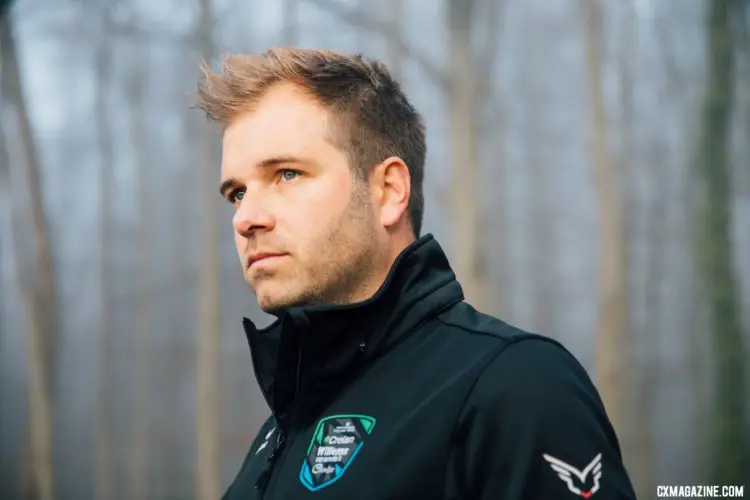
Niels Albert takes in Saturday’s action with his team. Junior and U23 Men, 2017 Zeven UCI Cyclocross World Cup. © J.Curtes / Cyclocross Magazine
For more from Valkenburg-Limburg, see our dedicated 2018 World Championships page.














